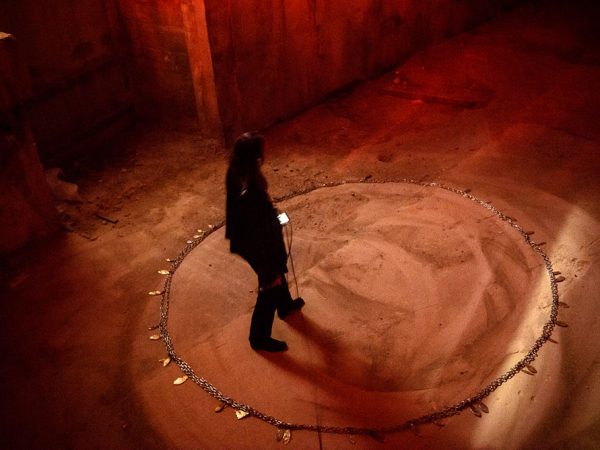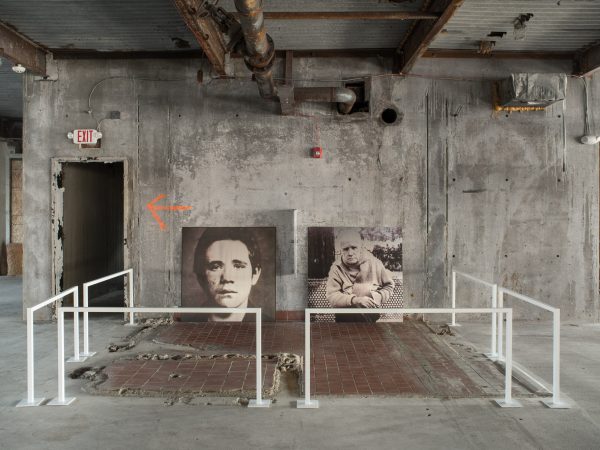The Academy Award nominated documentary ‘Minding the Gap’ uses skateboarding to probe masculinity, class, and trauma.
In our collective mind’s eye, skateboarding is for skinny young boys with long hair, threadbare jeans, tanned skin, and cheeky smiles. They zip down the street, glide into the sunset, and move as lightly as the air they leap through. We think of beanies and bad bleached hair, punk music and zines, sneakers and Thrasher hoodies. We imagine skateboarding to be cool and irreverent, an escape from everyday norms and restraints. But we rarely stop to ask what it might operate as an escape from.
In Bing Liu’s Academy Award nominated documentary, Minding the Gap, skateboarding unites a group of frustrated young men in the economically depressed town of Rockford, Illinois. Rockford is characterized by its stagnancy after the exodus of the manufacturing industry. The film reports that up to 49% of Rockford residents make less than $15 per hour and that the town has one of the highest emigration rates nationwide. Rockford has also been marred by high instances of violence—a quarter of which are domestic. As Liu turns his camera towards two of the skaters he grew up with, he reveals a deep-rooted cycle of trauma.
Above The Fold

Introducing: Marine Serre, 2017 LVMH Prize Finalist

Synthesized Chaos: “Scholomance” by Nico Vascellari

Escapism Revived: Backstage London Fashion Week Men’s Spring/Summer 2018

Tom Burr Cultivates Space at Marcel Breuer’s Pirelli Tire Building
Zack and Keire grew up at the skatepark in Rockford with the film’s director. 10 years after their childhood together, Liu returns as Zack, now 23, is on the cusp of parenthood, and Keire, now 17, is reckoning with the death of his father. Both Zack and Keire reveal to Liu that they did not feel safe at home as children. “Today, they would call it child abuse,” Keire explains. As the film continues, the director revisits his own childhood and confesses that the skate park was his refuge; making skate videos is also how he first began filmmaking, and thus skateboarding catalyzed his literal escape from Rockford.
The film’s skating sequences palpably relieve the tension—both for the boys and for the audience. Liu scores these sequences with elegant piano music, a choice that plunges them into a meditative trance. It softens the hard edge of the sport’s reputation and suddenly, we see skateboarding as they do—tranquil, healing, and beautiful.
As a sport, skating is defined by freedom, creative movement, and a pursuit of sensation—uses of the body that stand in opposition to Western masculinity’s conformity. Skaters imagine their bodies outside of the boundaries of urban design and re-appropriate environments designed to segregate or gentrify, imprinting their bodies on the city landscape. This is how the sport empowers working class youth to pursue pleasure in spaces that they have been excluded from.
Nonprofits have utilized these benefits to inspire young people around the country. In Phoenix, Arizona, Skate After School was founded by a group of skaters as a community project that has bloomed into a full-fledged non-profit, providing access to skateboarding at eight elementary schools in low-income neighborhoods. Executive Director and co-founder Ryan Lay, a professional skateboarder, says that in addition to increasing access to healthy activity and community engagement, skating is also an important mode of transportation, expanding geographical boundaries for those on the margins.
“Skaters imagine their bodies outside of the boundaries of urban design and re-appropriate environments designed to segregate or gentrify, imprinting their bodies on the city landscape.”
“We’ve heard the kids give testimonials about how the skateboard has opened up their neighborhood,” Lay explains. “Skateboarding is this axis, this tool, to interact with your environment in a whole new way and expand the horizon of what is possible.” Skate After School not only instructs young skateboarders, but also preaches what Lay feels are the sport’s core values: generosity, respect, innovation, and persistence. Many of its students go on to volunteer as instructors once they have aged out of the program and have become involved in the Phoenix skating community; in Lay’s words, they are “figuring out their relationship to the greater skateboarding culture as a teenager, and that’s really exciting for us.”
In Skate Life: re-imagining white masculinity, author Emily Chivers Yochim explains why skateboarding holds such a strong appeal to social ‘outsiders.’ As a subculture, skating is predicated on community rather than competition, which makes it unlike most mainstream sports. Its emphasis on self-expression and risk-taking demands vulnerability, more so than hegemonic machismo.
Likewise, American mythology equates masculinity with providing an income, and poverty can make this prescribed narrative of manhood seem out of reach. At the beginning of Minding the Gap, Zack says, “Your whole life, society tells you, ‘be a man,’ and ‘be tough’ […] and you don’t grow up thinking that’s the way you are. When you’re a kid, you just do, you just act, and then somewhere along the line, everyone loses that.” Keire, Zack, and the other skaters in the film take pleasure in not only the sport itself, but in the reprieve that it offers from expectations of who they “should” be.
And yet, Yochim reminds us that the archetypal skater boy ultimately still squares with our American ideal of freedom-loving, individualistic male heroes. America raises kids to believe that they can do anything, while designing systems that make it more difficult to do so, as Zack and Keire realize. Capitalism still commands their trajectories, and the reprieve offered by skateboarding is only temporary. In Zack’s case, escaping to the skate park strains his relationship with Nina. As Yochim argues, alleviating the expectation of a male breadwinner can leave all financial and familial burdens on the shoulders of skaters’ partners—in this case, poor women. About halfway through the film, Nina leaves Zack, taking their son, and we learn that Zack has been abusive. To excuse violence as an outlet for misplaced anxiety would be to minimize Nina’s sacrifices and suffering—as well as that of the many other Rockford women and children whose stories she embodies.
“Skateboarding is this axis, this tool, to interact with your environment in a whole new way and expand the horizon of what is possible.”
Lay reflects on what the documentary meant to him and his friends, who have known Bing Liu for years through Midwest skating circles. “Skateboarding is a really, really perfect lens to tell these stories—it feels very current and it’s very relatable,” he tells me. Though there have been a number of mainstream films added to the skate movie canon in recent years, rarely are they made by and for the skateboarding community. “I felt so proud that someone who skateboarded made that film […] a lot of people in the skateboard industry in general are having conversations about [it]. Like most sports, skateboarding is largely male-driven and so it’s a really important film for young boys to watch especially.”
Mainstream skateboarding texts and media tend to obscure skating’s relationship to social identity altogether. As skating becomes increasingly commercial, and takes its place at the 2020 Summer Olympics, its complex origins may cease to be evident. Tony Hawk is the most famous skateboarder to date, and in the early 2000s, Hawk’s merch line was netting around $30 million in profits per year, signaling the commercial viability of an aesthetic long associated with vagrants and slackers, or other class-based stereotypes. In David J. Leonard’s analysis of the 2004 video game Tony Hawk Underground II, American inner cities are imagined “as a space of white play, devoid of poverty, state violence, or police brutality.” It presents graffiti, destruction of property, and skating as gimmicks of an “alternative” lifestyle, unlike “ghettos,” where the bodies of people of color are actively surveyed and incarcerated. Skating is then positioned as an extension of apathetic, white, masculine cool-ness, in which real world politics and social issues are swept under the rug.
Our understanding of skateboarding as romantic is not necessarily wrong. The sport—or even, art—is beautiful, sensitive, and liberating. But Minding the Gap reminds us that this is an activity with origins in working class communities, and remains a powerful outlet for the fears and frustrations of those on the margins. Its power to heal is transformative, but it is still bound within the system that it offers an escape from.






